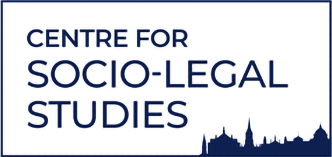
Discursive Memetics and the Study of Law

What comes to your mind once you hear the word ‘meme’? Probably you think of memes as silly pictures circulating on the internet. Perhaps, if you are interested in exploring various sciences, you think of a meme in the originally intended sense as any piece of information transmitting meanings. Thus, memes are indeed those silly pictures, but they are also much more than just that: memes are any phrases and otherwise spread bits of meaningful data which we encounter on- and offline.
What does the law have to do with this? As a highly conceptual and rigid language, law is full of memes. Moreover, memetics – the study of how information circulates – fits very well with Socio-Legal research. Consider it yourself: the language of law is so inflexible that many legal concepts like culpa in contrahendo or mens rea persist as meaningful phrases for millennia. Thus, these legal memes are easy to trace back in time and see how the law evolves throughout generations.
Memetics does exactly this: just like genetics traces back the development of organisms through bits of data transmitted by genes, it tracks down the evolution of meanings through circulation of memes. Hence, the whereabouts of such ancient legal concepts as ‘crime’ or ‘jus soli’ can show more general development of the legal vocabulary, the legal doctrine, and by extension of the law and societies where these concepts have been used for spans of many eras.
I utilised memetics in my study of law as I was tracing an exceptional progress made by a very recent legal concept, the ‘gay propaganda’ ban. It originated as Section 28 in the 1980s that banned the ‘promotion of homosexuality’ in British schools. It then turned up in the conservative discourses of American evangelicals in the 1990s. As a successful catchphrase in a slightly new form of the ‘propaganda of homosexuality’, it resurfaced in Russia in the 2000s as a provincial directive. Eventually, it was enhanced by the power of federal law: initially ‘gay propaganda’ legislation was introduced in 2013 and it was amended to widen its scope in 2022. In my book Violent Affections: Queer sexuality, techniques of power, and law in Russia, I uncover that the invocation of this meme in the official discourse of the Kremlin prepares ground for actual harm, including physical attacks on LGBT+ people.
The study of legal memes is not new. However, if the methodology of legal memetics means simply tracing particular catchphrases in a limited corpus of legal texts, then it appears too positivist. This is why for Socio-Legal Studies I propose a newer approach, Discursive Memetics. Previous approaches treat law as a limited collection of published texts. Within this definition, court rulings, statutes, and contracts appear as the law; whereas our practices and thoughts about the law, legal scholars’ comments and legislators’ rationales, as well as many other types of texts are excluded from the scope of conventional legal memetics. Additionally, what researchers usually look at is a specific legal phrase, a term rather than a concept. I argue against such positivism.
In my approach, the law is treated as discourse. Hence, first, different things fall into what counts as law: wherever legal meaning is transmitted, there is law. Socio-Legal Studies make it perfectly clear that the law cannot be limited to a set of defined texts such as precedents or statutes. Instead, a much wider variety of discursive forms should be regarded. This is why I refer to this approach as discursive memetics: it is about encompassing the entire discourse of law rather than simply a bunch of texts.
Second, legal concepts may appear stable in time and place, but they may as well not be. Perhaps, a few Roman legal terms indeed persisted over a couple of millennia. Yet, a concept is a much wider phenomenon than its articulated time- and place-specific term. The ‘gay propaganda’ concept demonstrates this very well: it took off as ‘promotion of homosexuality’ and resonated as ‘propaganda of non-traditional sexual relations’ in Russia; or ‘LGBT-free zones’ in Poland; or the ‘Don’t Say Gay Bill’ in the USA. The list may be continued. The point is that Discursive Memetics traces specific meanings, not specific catchphrases. This is especially relevant for the interdisciplinary borderlands of Socio-Legal Studies because it allows a broader conceptualisation of law and a more inclusive approach to its vocabulary.

